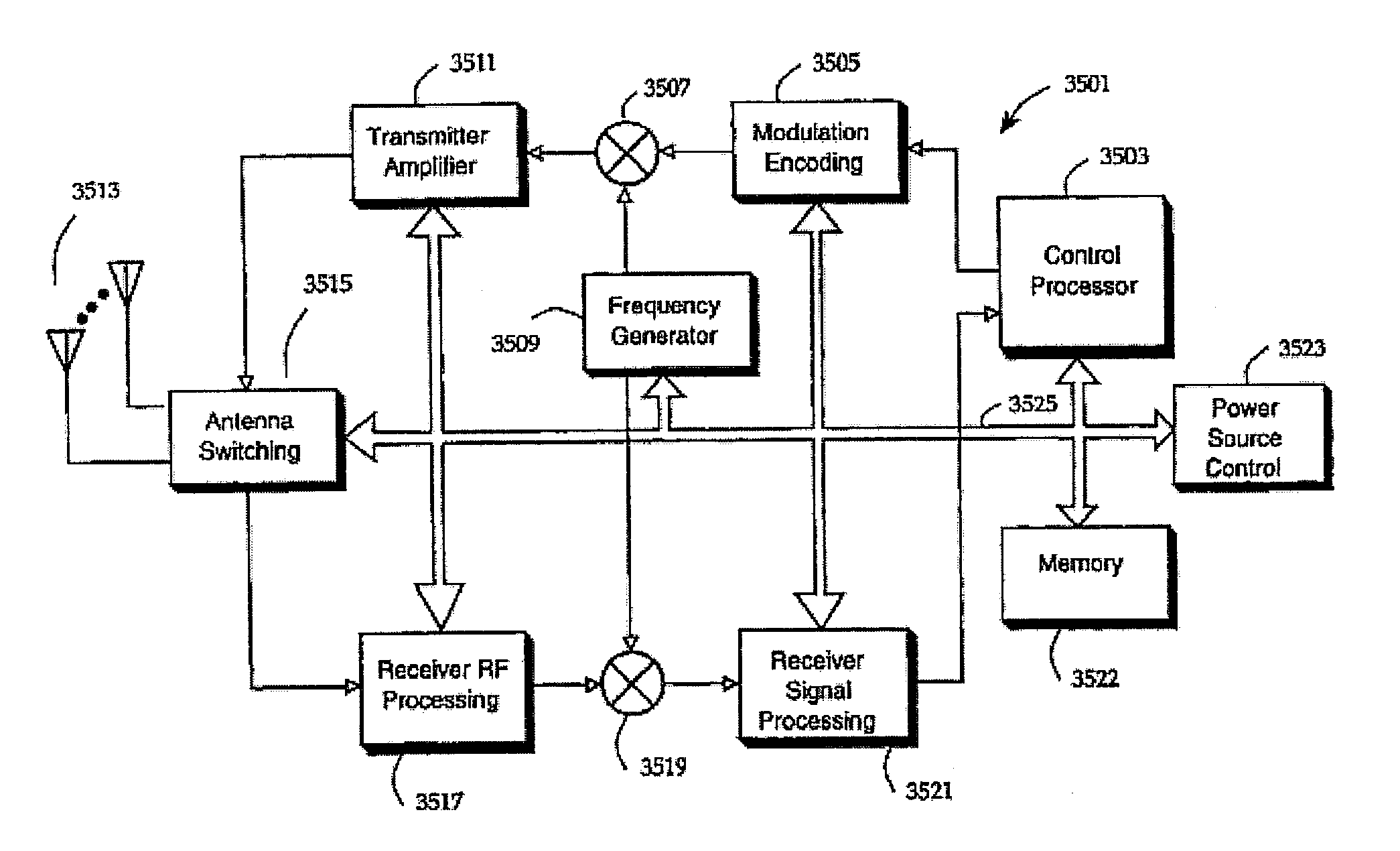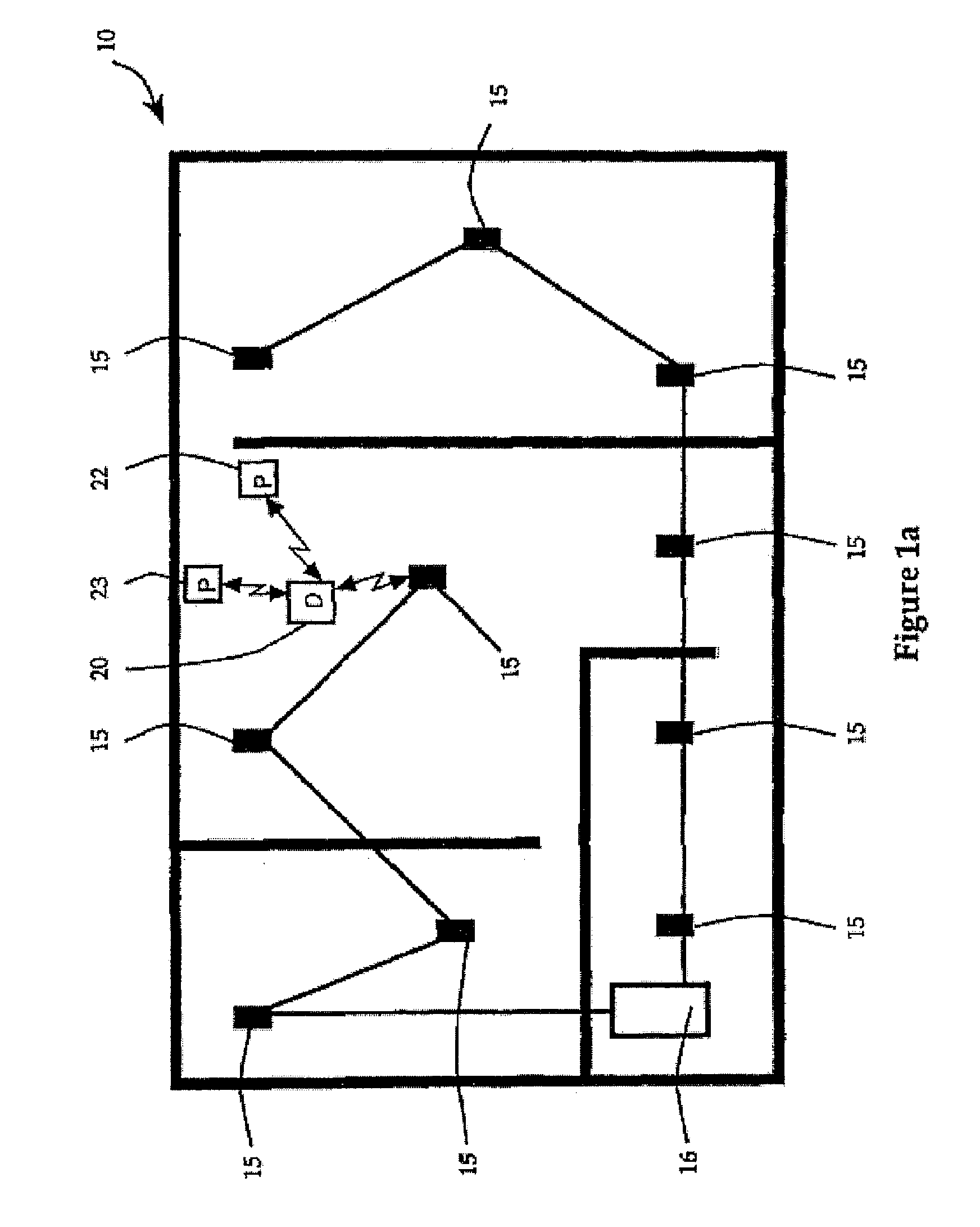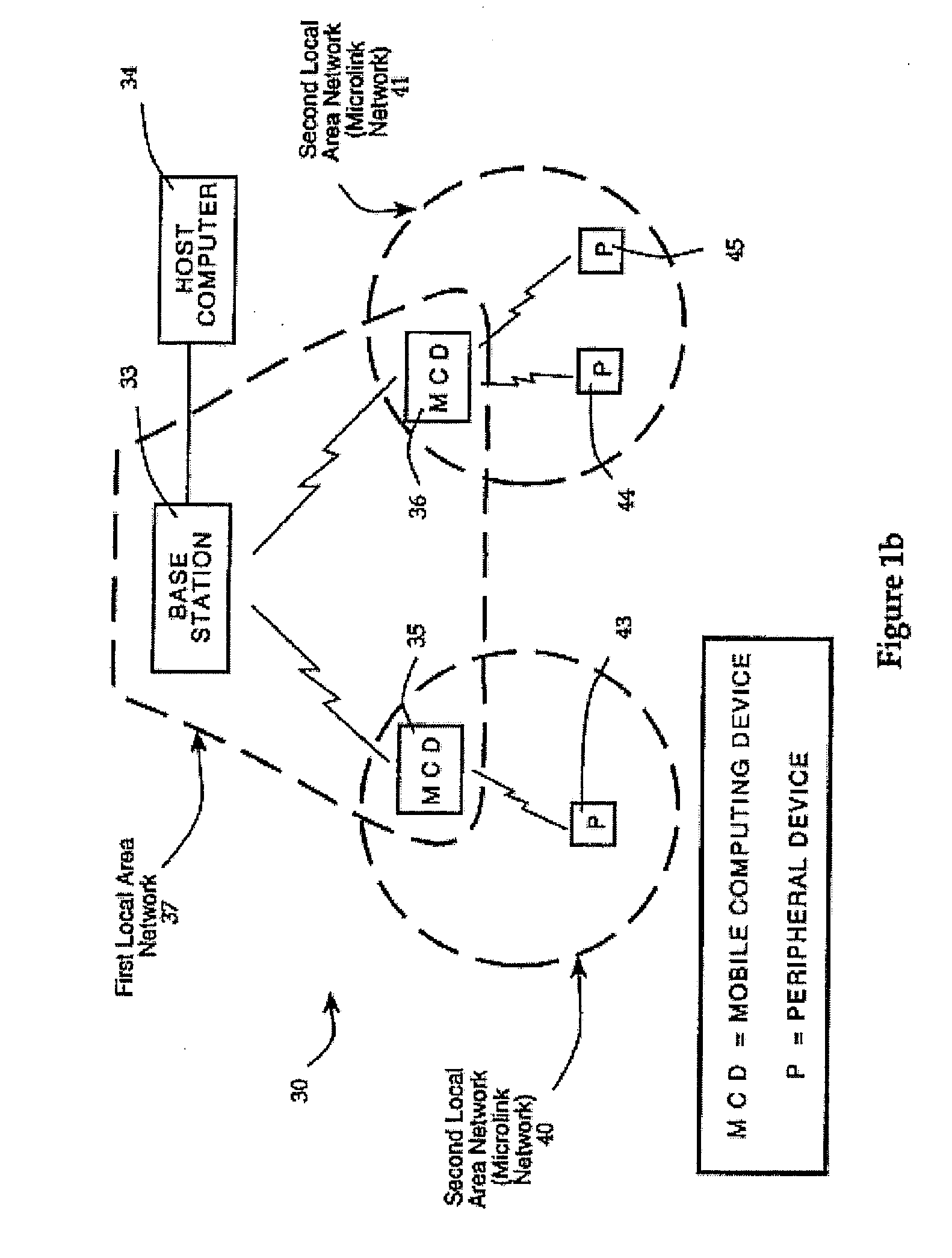System and method for determining data rate
a data rate and data technology, applied in the field of communication networks, can solve the problems of inability to use a single or common communication channel for each base station, prone to collision between each base station transmission and neighboring base station transmission, and inability to achieve the effect of efficient communication pathway
- Summary
- Abstract
- Description
- Claims
- Application Information
AI Technical Summary
Benefits of technology
Problems solved by technology
Method used
Image
Examples
Embodiment Construction
[0098]FIG. 1A illustrates a hierarchical communication system 10 within a building in accordance with the present invention. The illustrated hierarchical communication system 10 includes a local area network (LAN) for maintaining typical communication flow within the building premises, herein referred to as a premises LAN. The premises LAN is designed to provide efficient end-to-end routing of information among hardwired and wireless, stationary and roaming devices located within the hierarchical communication system 10.
[0099] The premises LAN consists of an infrastructure network comprising radio base stations, i.e., wireless access points 15, and a data base server 16 which may be part of a more extensive, wired LAN (not shown). Herein, base stations which participate in routing and relaying data throughout the communication network are referred to as “access points.” If they also participate in the storage or migration of data and program code or in local processing, the base st...
PUM
 Login to View More
Login to View More Abstract
Description
Claims
Application Information
 Login to View More
Login to View More - R&D
- Intellectual Property
- Life Sciences
- Materials
- Tech Scout
- Unparalleled Data Quality
- Higher Quality Content
- 60% Fewer Hallucinations
Browse by: Latest US Patents, China's latest patents, Technical Efficacy Thesaurus, Application Domain, Technology Topic, Popular Technical Reports.
© 2025 PatSnap. All rights reserved.Legal|Privacy policy|Modern Slavery Act Transparency Statement|Sitemap|About US| Contact US: help@patsnap.com



